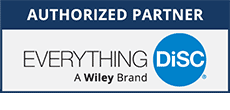The pressure to make the right hiring decision can be overwhelming for many managers. Not only must you ensure that the new hire has all the right skills for the job, but you need to be confident that they can successfully integrate with the existing team. When your employees don’t get along, it can affect the performance of everyone in the office. How can you get insight on whether or not personalities will be in conflict? This is why many companies turn to the DiSC profile assessments for hiring.
This simple test assigns individuals to four basic personality categories. The results provide information on how these personality types can best work together in your office environment. Let’s take a closer look at the way you can use DiSC profiles when hiring and onboarding new employees.
What Makes DiSC the Right Choice?
Unlike some of the more complicated personality profile tests on the market, DiSC is easy to take and easy to understand. The results assign four basic personality traits, as well as secondary traits to each of your team members. You can use this information to determine how each person on your staff may communicate with one another while handling conflict, staying organized, and optimizing productivity.
For this reason, many companies are turning to DiSC profiles for their ease of use and overall value.
When Should You Use the DiSC Profile Test?
We recommend using the DiSC profiles to help you during the hiring process. Once you have determined that the individual fits all the requirements for the open position, administer the test to gain insight on how they will work with others on your team and their personal effectiveness in the workplace. Using these insights, you will be able to better understand their areas of strengths and weakness, and where you can help them grow.
How Do You Use the Results?
Each initial of DiSC stands for a specific category of personality traits.
- Dominance
- Influence
- Conscientiousness
- Steadiness
You can begin to see patterns in behavior with your employees to better understand how someone with any given trait will fit in with the team. For example, putting an individual with a D style in a department where the primary personality trait is C could lead to misunderstandings if they aren’t managed correctly. The individual with a C style may feel steamrolled by the person with a D style. They may both benefit from also collaborating with an I style personality.
Using this information to develop departmental structures can help everyone work together in a cohesive way.
The knowledge gained from learning how your new employees will work together with your staff can help integrate them into your office culture in a more seamless fashion.
Can your organization benefit from using the research-validated online profile assessments like DiSC? Corexcel can provide the tools and training you need to use DiSC for creating a more cohesive workplace, so contact us to learn more.



